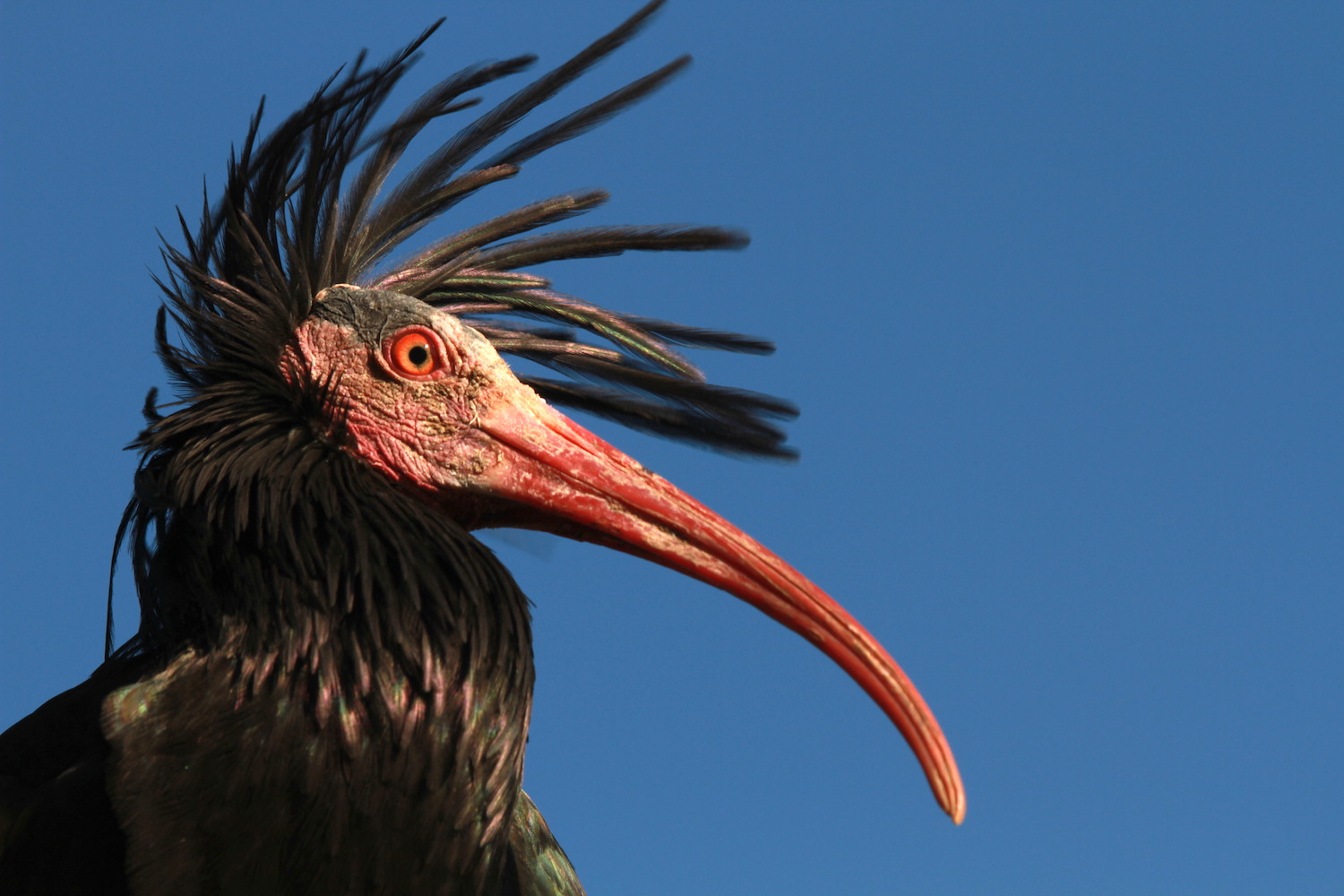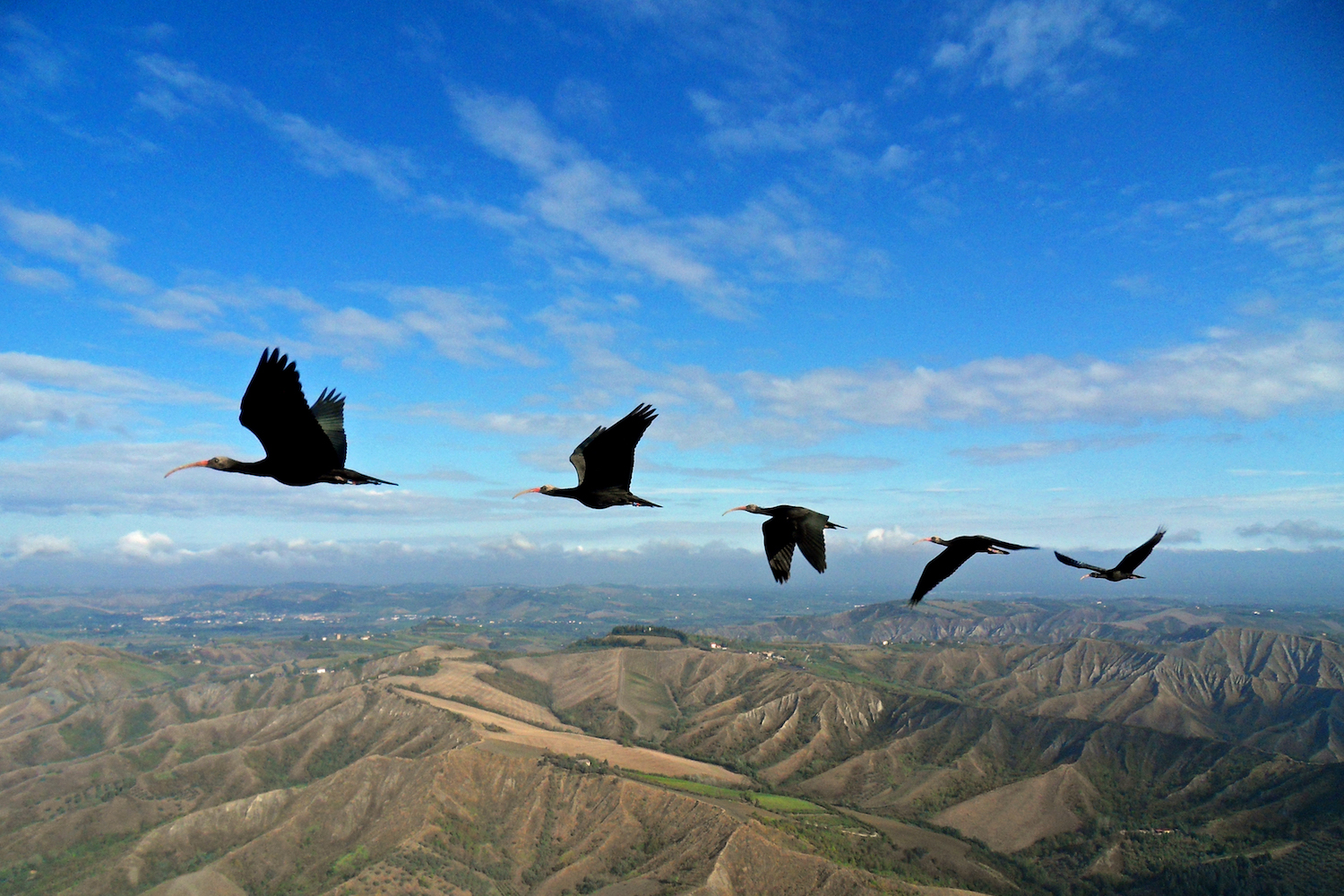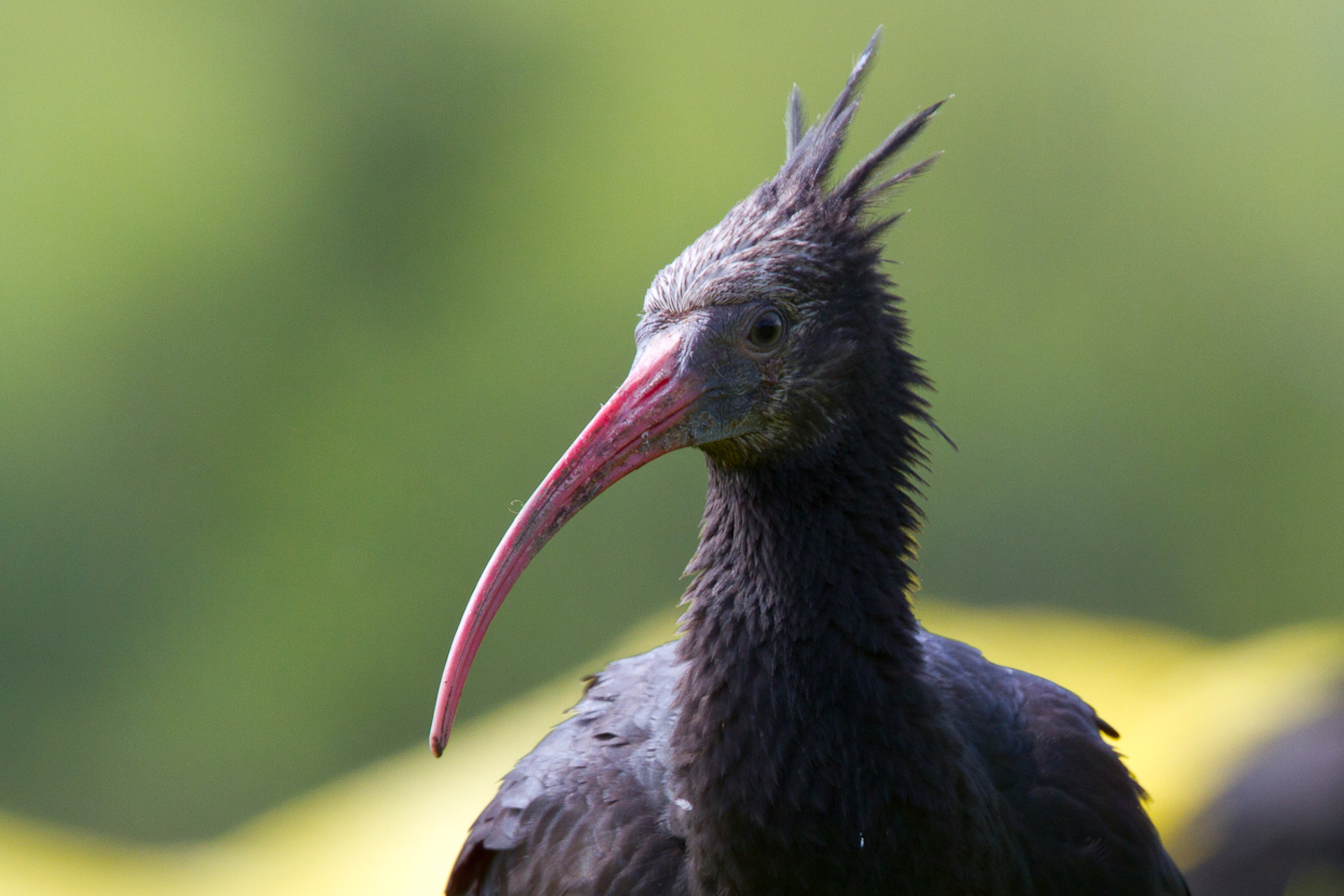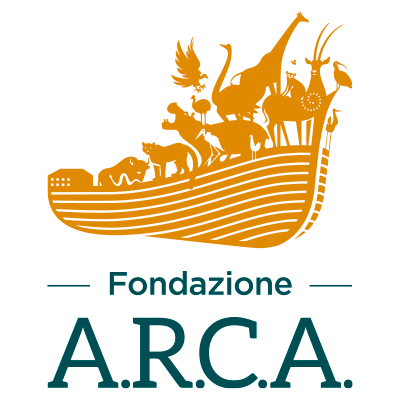The Northern bald ibis (Geronticus eremita) is classified as “Critically Endangered” in the IUCN Red List. The wild population has undergone a progressive decline throughout the centuries, also due to natural causes. However, in more recent times, the population has suffered a decline that seems to be the result of a combination of different factors, with many threats that impend over the different populations. Since the beginning of the 20th century, the Northern Bald Ibis has been divided into two disjointed populations: the western population in Morocco and the eastern population in Syria and Turkey. In Morocco the main threats are represented by illegal buildings, disturbance near the nesting sites and changes in agricultural techniques used in the feeding areas. On the other hand, hunting represents the main threat to the small Syrian population, whereas in Turkey the threat that prevails is pesticide poisoning. In Central Europe, the Northern bald ibis was present until the 17th Century, before becoming extinct due to hunting pressures.
 |
 |
 |
With 50% contribution of the LIFE financial instrument of the European Union (LIFE+12-BIO_AT_000143)
 Italiano
Italiano English
English Deutsch
Deutsch




